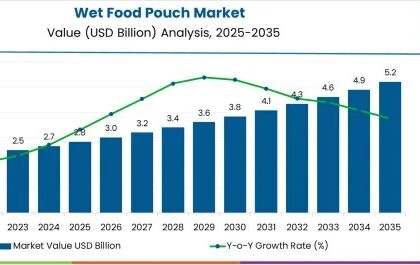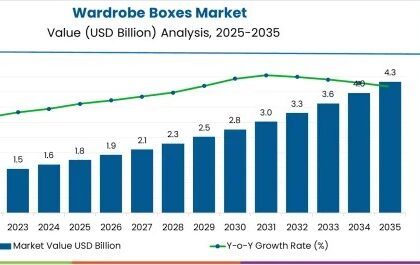On a recent Saturday in Los Angeles, shoppers fumbled through checkout lines—half with a crumpled paper bag, the rest with oversized cotton totes shouting climate slogans. Starting next year, they won’t have the luxury to choose: California is phasing out all plastic “reusable” bags. Only recycled paper will remain.
This is no trend. It’s a full-blown market shift.
The recycled tote bag boom is real. But so are its contradictions.
Global sales of recycled fabric bags are exploding. Future Market Insights pegs the market at USD 2 billion today, heading toward USD 3.2 billion by 2035, growing at a steady 6.5% CAGR. Brands, regulators, and even some activists call it a win.
They’re wrong to celebrate so fast.
Swapping plastic for fabric doesn’t solve the problem. It disguises it.
Regulation is winning the war on plastic—but it’s leaving a vacuum
Governments have finally gotten serious about banning thin plastic. California, New York, and Oregon have implemented rules with real bite. And Europe? Even stricter. Retailers are scrambling. What fills the void is obvious: reusable fabric bags, often stitched from recycled materials, usually imported, and almost always branded.
It’s a gold rush.
But while the product feels sustainable, the system around it is anything but.
Let’s get honest: recycling isn’t working
Fabric recycling is a mess. It’s underfunded, under-regulated, and technically fragile. There simply isn’t enough high-quality recycled cotton to meet this new demand. Supply chains are overpromising and underdelivering.
And chemical textile recycling—the thing everyone pins their hopes on? It’s still on the lab bench.
We’ve created a new dependency before the infrastructure is even built.
A tote that never gets reused is just more junk
Here’s the real kicker: most of these fabric bags aren’t reused enough to justify their environmental cost. A cotton tote needs to be reused hundreds of times to offset the water, energy, and emissions used to make it.
But that’s not what’s happening.
Promotional bags. Branded swag. Gifts with purchase. People own 10, maybe 15 totes—and use 2 of them. The rest gather dust, or worse, end up in landfills. We’re not fixing the waste crisis. We’re shifting the branding.
Production is the real villain. And no one wants to talk about it.
The recycled fabric bag market doesn’t exist in a vacuum. It’s tied to fashion’s endless overproduction loop. The same factories sewing reusable bags are producing clothes we’ll wear twice. The system isn’t broken. It’s working exactly as designed—to overproduce and underprice.
And until we stop pretending that “recycled” equals “green,” we’ll keep digging the same hole—just in organic cotton instead of plastic.
Circular economy? Not if we keep skipping the hard parts.
Future Market Insights makes a strong case: the momentum behind recycled fabric bags is global, and it’s growing. But their analysis also shows the fault lines.
We don’t have robust collection systems. Brands rarely design for recyclability. There’s no producer accountability.
A truly circular system isn’t just about replacing bad products with better ones. It’s about changing behavior, fixing incentives, and designing waste out of the system entirely.
Right now, we’re just trading trash formats.
Opinion: Stop romanticizing the tote
Let’s be blunt—fabric bags have become a totem for guilt. For branding. For green theater.
Yes, they feel better than plastic. Yes, they make a statement. But statements don’t build systems.
The recycled-fabric tote shouldn’t be treated as a solution. It should be seen as a starting point—proof that policy can shift markets, and that consumer behavior can evolve. But it’s only step one.
Without upstream caps on virgin fiber, investment in recycling tech, and policies that demand accountability from the brands profiting from the trend, we’re not solving anything.
Get A Sample Now: https://www.futuremarketinsights.com/reports/recycled-fabric-bag-market





